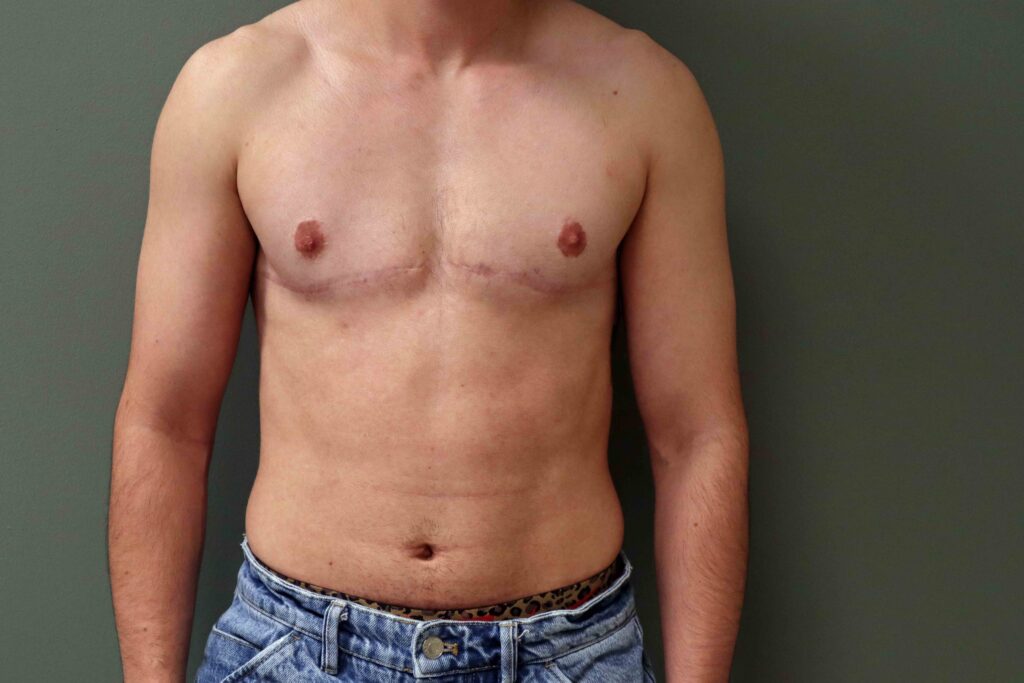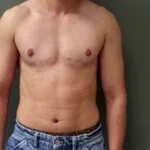
For many transgender and gender nonbinary individuals, top surgery is a deeply affirming step in aligning their physical appearance with their gender identity. Whether someone is pursuing female-to-male (FTM) or female-to-nonbinary (FTN) top surgery, one of the key considerations are your gender preferences regarding the nipple-areola complexes (NACs). Some people choose to keep them, while others prefer to remove them altogether. If one chooses to preserve them, there are several other considerations including size and location on the chest.
There are a few surgical techniques available, each with different effects on the nipple-areola complex (NAC) in terms of size, placement, and sensation.
Nipple Options in FTM/FTN Top Surgery
The approach to nipple preservation or removal varies depending on the surgical method chosen. Let’s break down the most common techniques and how they impact the nipples:
- Keyhole Mastectomy: Ideal for individuals with small breasts and good skin elasticity, this method involves an incision along the margin of the lower half of the areola. The breast tissue is removed through this incision while leaving the nipple attached. Since the nipple remains connected to its original blood supply, its position and overall appearance remain mostly unchanged, aside from potential shrinkage due to reduced stretching.
- Periareolar (Concentric Circle) Mastectomy: This technique entails the removal of a circular ring of skin around the areola in order to resize it. The nipple stays attached to the underlying tissue, maintaining blood supply and nerve function. However, this method does not allow for major repositioning of the nipples.
- Double Incision with Free Nipple Grafts: This is the most commonly used approach for top surgery. It is generally the procedure of choice for breasts that are a “C” cup or larger and those that have loose skin and drooping. It can also be used in individuals with smaller breasts who prefer this over the keyhole or concentric circle options. This technique involves making curvilinear or linear incisions across the chest to remove breast tissue and excess skin. The nipples are detached, resized and then grafted back in a more desirable position. While this method offers greater control over nipple placement and size, the nipples lose their original blood supply which can impact the presence and projection of the nipples.
- Double Incision without Nipples: Some individuals opt to forgo nipples altogether. In this case, the double incision mastectomy is performed without reattaching the nipple-areola complexes. This results in a relatively smooth and flat chest, which some people find more aesthetically pleasing or affirming.
Factors That Influence Nipple-Areola Complex Results
The different surgical techniques impact the ultimate appearance and naturalness of the nipples in varying ways. Here are a few key factors to consider:
- Sensation: When the nipple remains attached (as in the keyhole or periareolar methods), some nerve connections may remain intact, allowing for partial sensation to return over time. In contrast, free nipple grafts sever the original nerve connections leading to total numbness – at least initially. In the long term, some nerve fibers may grow into the grafted tissue possibly resulting in some type of reduced sensation.
- Projection & Shape: With free nipple grafts, the long-term projection or even present of the nipple isn’t guaranteed. Some nipples may either flatten out or not survive the grafting process though the surrounding areola typically will heal. In some situations this is actually beneficial as it de-feminizes the original anatomy of the nipple-areola complex.
- Color Changes: In darker complected individuals, free nipple grafts often experience loss of pigmentation. If this persists, the tissue can be tattooed to provide a more desirable color.
Post-Surgery Care and Recovery Tips
To maximize healing and achieve the best possible aesthetic outcome, it’s essential to follow post-operative care instructions from your surgeon. Here are a few general guidelines:
- Avoid strenuous activities for at least 8 weeks to prevent tension on the healing tissues.
- Follow all bandaging and wound care instructions to reduce the risk of infection and promote optimal healing and scarring.
- Refrain from smoking, vaping or using nicotine products for at least a month before until at least one month after surgery. In particular, nicotine restricts blood flow and can impair healing. Therefore, nicotine patches must be avoided as well.
- Use silicone scar treatments (such as gels or tapes) starting around 3–4 weeks post-surgery to help minimize scarring and improve your long term outcome.
- Be patient with the healing process. It can take up to a year or longer for scars to mature and for the appearance to stabilize.
Making the Right Choices for You
The decision about whether to keep, resize, reposition or remove the nipples during top surgery is a highly personal one. It’s important to discuss your goals and concerns with a qualified gender-affirming plastic surgeon who can help tailor the procedure to your needs. Whether you want a traditionally masculinized chest, a flat chest that is neither completely masculine or feminine in nature, a more androgynous appearance or a nipple-free aesthetic, there are many options available to help you realize your gender ideal and feel more comfortable with your body.
By understanding how different surgical techniques impact nipple appearance, sensation and healing, you can make an informed decision that aligns with your gender identity and personal preferences.
No matter which route you choose, top surgery is a powerful step toward feeling more comfortable and confident in your own skin.
Consulting with a Top Surgery Specialist
If you are interested in pursuing top surgery, you can schedule a consultation with me, Dr. Steven H. Turkeltaub, either calling my office at (480) 451-3000 or contacting us online.
I am board certified by the American Board of Plastic Surgery and have been practicing in the Scottsdale and Phoenix area for 38 years and have extensive experience in various gender affirming top surgery procedures.
My staff and I are strongly committed to providing you with the best possible care and supporting you during this part of your gender journey.





